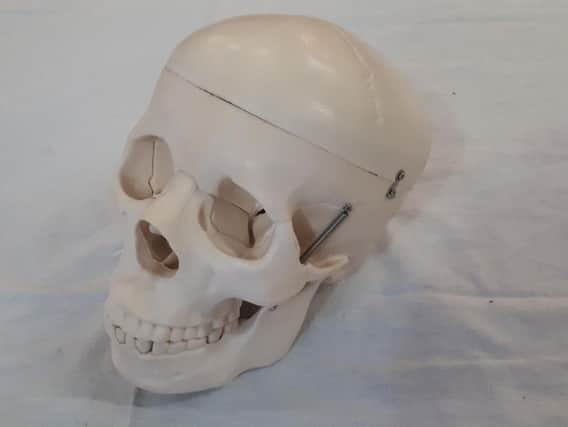Anatomical models and medical instruments make for unusual antiques


We had a request in the centre for an antique microscope. Not for a collector, but a student preparing to go off to medical school. Apparently, ultra precise lab ones are too pricey for most students to afford their own, but well made vintage ones work better than cheaper modern alternatives; how refreshing!
So, I thought we’d delve a little deeper into the murky world of medical instrument collectables.
Advertisement
Hide AdAdvertisement
Hide AdHumankind has been fascinated by medicine and the human body since time immemorial, creating a repository of equipment including books, charts, early surgical instruments and weird and wonderful treatment ‘machines’.
Medical collectables are probably more diverse than you’d imagine.
Examples of unusual collectables include: vintage glass eyes or dentures, blood-letting equipment including jars that leeches were housed in, and various anatomical models used for medical instruction and practice.
It is hard to give a general guide to pricing, as the field is so varied, but there are plenty of places for the amateur medical equipment collector to go looking for inexpensive vintage curios.
Advertisement
Hide AdAdvertisement
Hide AdIf you love the thrill of hunting down a bargain, charity shops, car boot and vintage sales can be a source of fascinating finds, as well as auctions and antique dealers.
Some collectors have very specific criteria, such as medical instruments used only in the military field.
As a starter however, ‘apothecary bottles’ are fun and relatively inexpensive.
Glass or ceramic, with fascinating labels such as ‘hemlock’ or ‘laudanum’, they are especially eye catching displayed in the kitchen or bathroom!
Advertisement
Hide AdAdvertisement
Hide AdMedical instruments can start at a few pounds for a simple scalpel or saw, rising to hundreds for a highly sought after set of instruments complete in a doctor’s leather carry case. Early apparatus such as Victorian blood pressure or electric shock machines again fetch hundreds of pounds in good condition.
Unlike pottery or porcelain where there are literally millions of potential buyers, the collection of scientific instruments is more specialised, and you could unearth a real piece of history. Student or specialist, I wish you every success in building a ‘healthy’ collection!